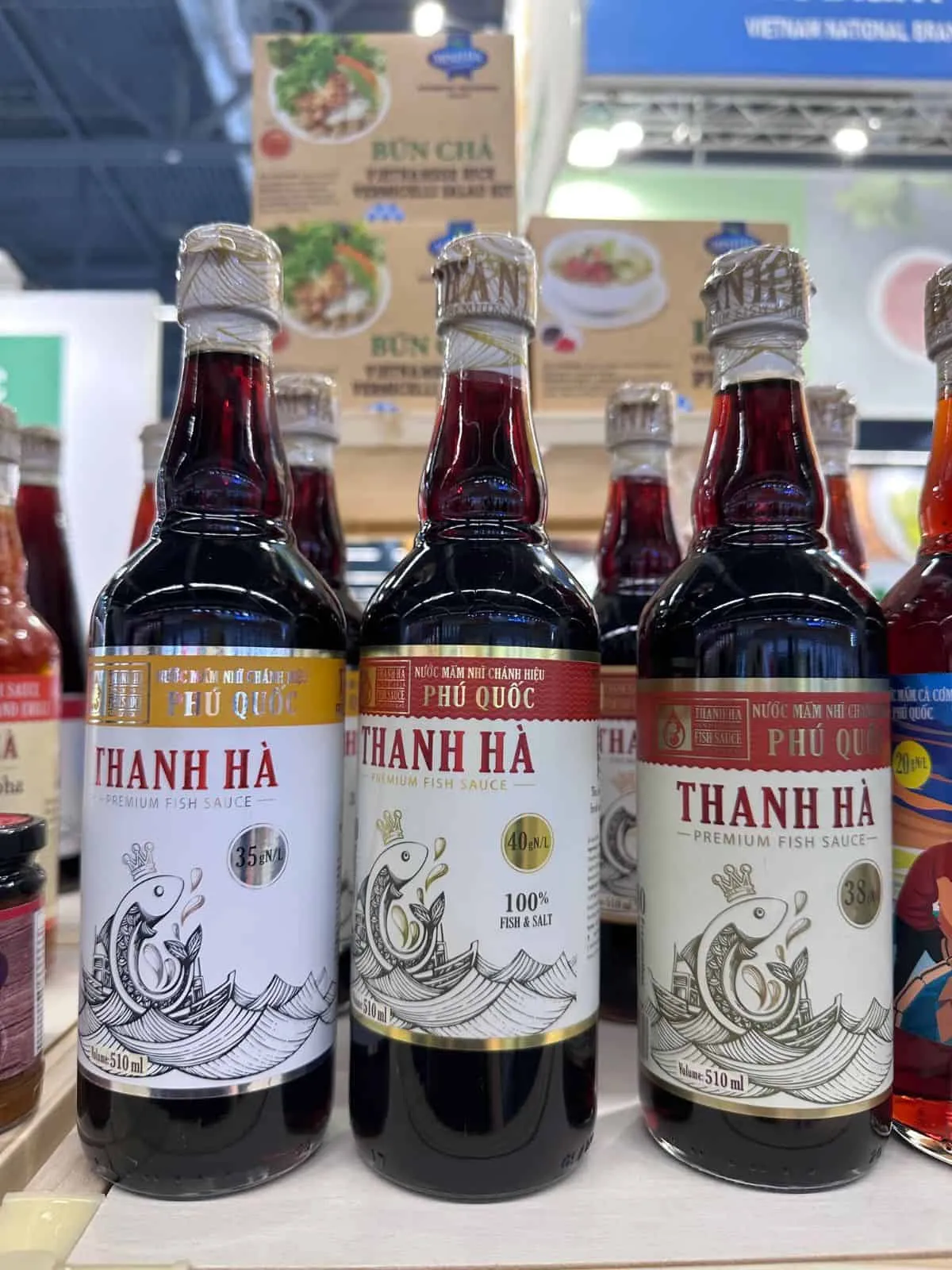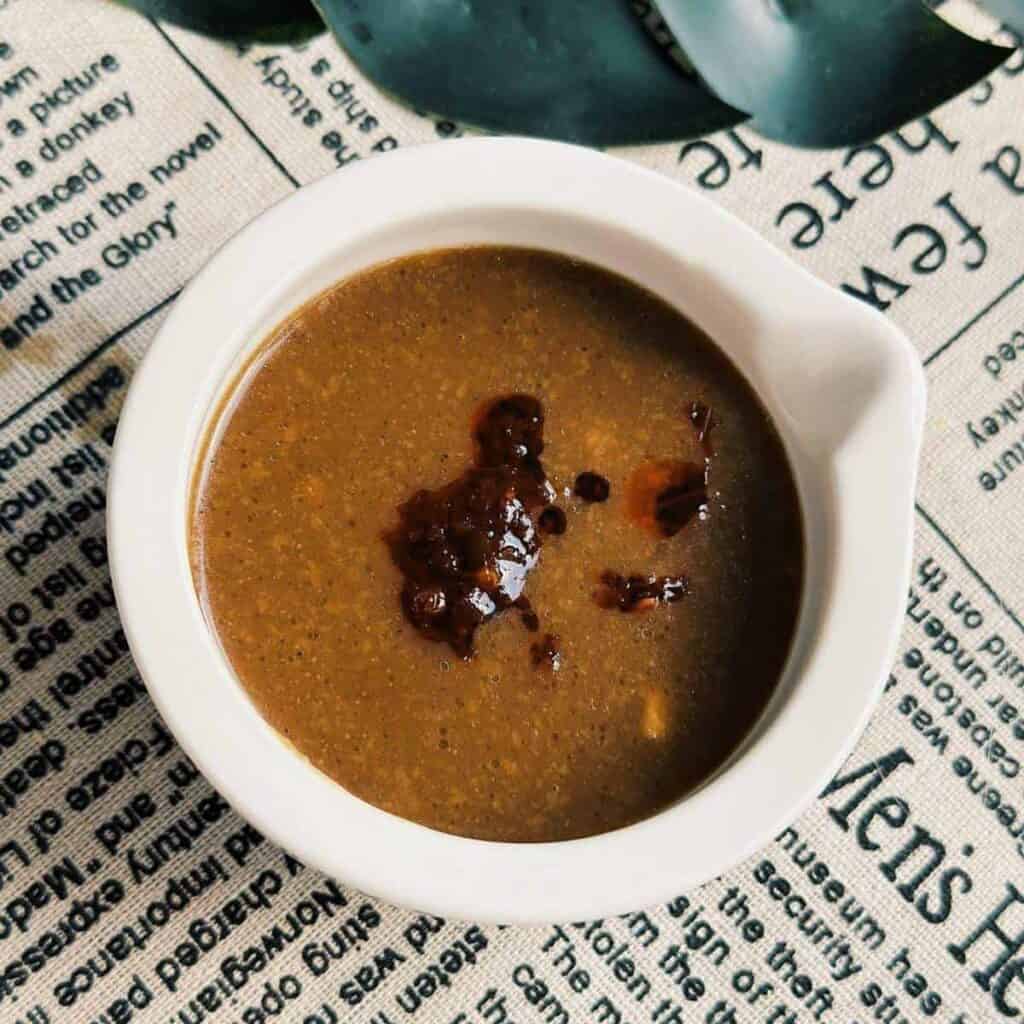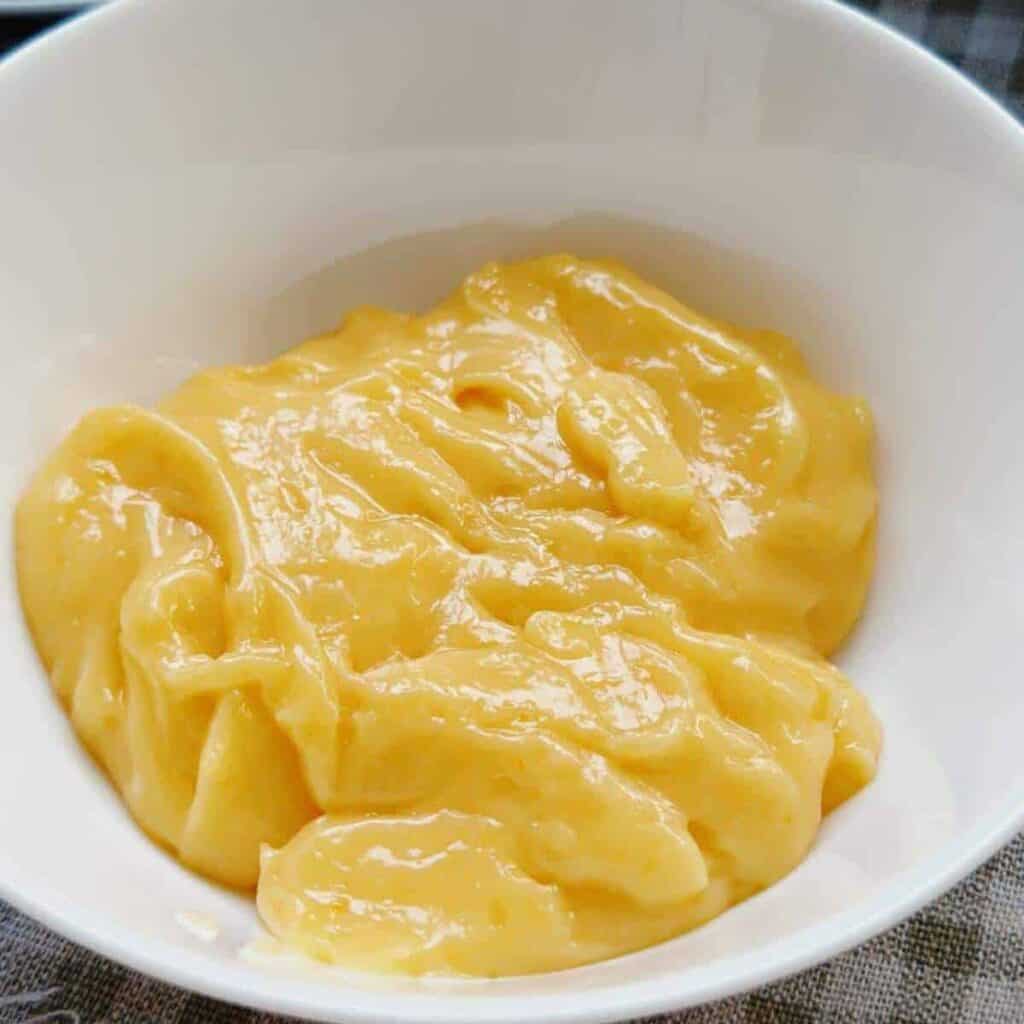Nước Mắm – fish sauce – is truly the heartbeat of Vietnamese cooking. We season with it, marinate with it, and turn it into all sorts of dipping sauces.
But here’s the thing: many people casually call Nước Mắm “Nước Chấm.” While that’s not completely wrong, it doesn’t feel quite right to us Vietnamese. So today, let’s clear up the mix-up once and for all!
Would you like me to expand this into a full intro with a little cultural touch, explaining why the distinction matters?

What is “Mắm”?
Before we zoom in on Nước Mắm (fish sauce), let’s talk about the bigger picture – Mắm. In Vietnam, this word is like an umbrella that covers all sorts of fermented treasures from the sea: fish, shrimp, squid, even clams.

Fermentation is nothing new to Asian kitchens. You’ve probably heard of soy sauce, kimchi, miso, natto, gochujang, tempeh, or kombucha – all born from that magical, time-honored process.
Across Southeast Asia, you’ll find countless versions of fermented seafood sauces and pastes—Thai pla ra, Lao padaek, Khmer prahok, Filipino bagoong, and of course, Vietnamese mắm.

In Vietnam alone, the world of mắm is incredibly diverse:
- Nước Mắm – The golden liquid essence of anchovies (or other small fish) fermented with salt. In Vietnamese, “nước” means water.
- Mắm Tôm – A Northern Vietnamese favorite, this fermented shrimp paste packs a bold, pungent punch. It’s a must for Bún Riêu, Canh Bún, Chả Cá Lã Vọng, and the iconic Bún Đậu Mắm Tôm.
- Mắm Ruốc – A Southern and Central Vietnamese variation of shrimp paste, essential for Bún Bò Huế.
- Mắm Nêm (Mắm Cái) – A robust fermented anchovy sauce that includes both fish and liquid. It shines as a dipping sauce, especially with Gỏi Cuốn (spring rolls) or Thịt Luộc (boiled pork belly).
- Mắm Bò Hóc – Vietnam’s take on Khmer prahok, popular in An Giang province near the Cambodian border. Made from freshwater fish like snakehead (cá lóc), it flavors hearty dishes like Bún Mắm, Lẩu Mắm, or Mắm Chưng.
Let’s Talk About Nước Mắm
When people talk about Vietnamese food, Nước Mắm (fish sauce) is often the first thing that comes up. Yes, it’s a little pungent – but believe me, it’s still tame compared to some of our other bold fermented sauces.
What makes Nước Mắm so special? It’s that deep, savory umami kick – the kind of flavor that lingers on your taste buds and ties a dish together. Think of it as our version of Filipino patis, Korean aek jeot, or Thai nam pla.

For authentic Vietnamese cooking, I always recommend using Vietnamese-made fish sauce. We love a sauce that’s not overly fishy, with a clean, golden-amber color and a smooth, balanced taste.
With Vietnam’s long coastline, fish sauce has become a craft tradition, with villages specializing in it from the North to the South. While Phú Quốc is famous for its top-notch Nước Mắm, there are plenty of other regions producing equally amazing bottles – Cát Hải (Hải Phòng), Nam Ô (Đà Nẵng), Nha Trang (my hometown!), and Phan Thiết (Bình Thuận).

Visiting Vietnam? A bottle of fish sauce makes a unique, truly Vietnamese souvenir. And while you’re at it, don’t miss out on other amazing products like Vietnamese coffee, peppercorns, and our artisan chocolate crafted from our own cacao beans.
How to Use Vietnamese Fish Sauce in Cooking
Choosing the Right Fish Sauce
Let’s start with picking the right fish sauce. Back home in Vietnam, my mom always keeps two types in the kitchen: the prized first-press fish sauce (nước mắm nhĩ) and a lighter, less concentrated one.
The first press is like liquid gold – rich, fragrant, and expensive. We save it for making dipping sauces (nước chấm) or for seasoning food right before serving, so its beautiful umami flavor stays intact.
The lighter fish sauce, on the other hand, is perfect for everyday cooking – marinating meats, seasoning soups, or adding depth to stir-fries.
“First press” simply means the sauce comes from the very first draining of the fermenting barrels, which is a good indicator of quality. A quick tip: look at the nitrogen level (N) on the label – that’s how quality is measured. A top-notch fish sauce will have over 30N, and some premium ones even hit 40N. Most regular brands sit in the mid-20s range.

In Vietnam, you’re spoiled for choice when it comes to first-press fish sauce since almost every brand has its premium line. But here in Germany, options are more limited. The go-to for many people is Red Boat, and I can also vouch for Thanh Hà fish sauce from Phú Quốc Island.
This family-run company has been perfecting fish sauce for over 100 years, and I had the chance to try it firsthand when I worked at the Food World Exhibition in Cologne in 2023 – it’s truly excellent.
How to Use Fish Sauce
- For Seasoning & Marinating
In Vietnamese kitchens, fish sauce is the universal seasoning. We use it for just about everything – soups, stews, grilled meats, stir-fries, braises – you name it. It’s a natural replacement for soy sauce, salt, or chicken powder, delivering both savoriness and that signature umami punch.
Some classic Vietnamese dishes with fish sauce:
- Grilled dishes: Bún Chả, Bún Thịt Nướng, Cơm Tấm, Lemongrass Pork Chops, Lemongrass Grilled Chicken, or Air Fryer Fish Sauce Wings.
- Soups & Stews: Bò Kho (Beef Stew), Cà Ri Gà (Chicken Curry), Canh Chua (Sweet & Sour Soup).
- Noodle Soups: Phở Bò (Beef Phở), Phở Gà (Chicken Phở).
- Braised dishes: Sườn Ram Mặn (Caramelized Pork Ribs), Gà Kho Gừng (Ginger Chicken), Thịt Kho Trứng (Braised Pork & Eggs).
- Stir-fries: Gà Xào Sả Ớt (Spicy Lemongrass Chicken), Bò Lúc Lắc (Shaking Beef), Rau Muống Xào Tỏi (Water Spinach with Garlic).
- For Dipping Sauces
Fish sauce is also the star ingredient behind Nước Chấm, the iconic sweet-sour-garlic-chili dipping sauce you’ll see in every Vietnamese restaurant abroad.
We use this versatile sauce for:
- Dipping: Chicken Spring Rolls (Gỏi Cuốn Gà), Sizzling Pancakes (Bánh Xèo), Steamed Rice Rolls (Bánh Cuốn), and Egg Rolls (Chả Giò).
- Salad dressings: Bún Gà Nướng (Lemongrass Chicken Vermicelli), Bún Bò Xào (Lemongrass Beef Vermicelli), Bún Chả Giò (Egg Roll Vermicelli).

The standard recipe is simple – fish sauce, lime or vinegar, sugar, garlic, and chili – but here’s a cultural note:
In Vietnamese, Nước Chấm literally means “dipping sauce,” and it’s a generic term. If you ask for “Nước Chấm” in Vietnam, locals might ask, “Which one?” because there are so many!
The version most people outside Vietnam know is more accurately called:
- Nước Mắm Pha (blended fish sauce),
- Nước Mắm Chua Ngọt (sweet and sour fish sauce),
- Nước Mắm Chấm (fish sauce for dipping), or
- Nước Mắm Tỏi Ớt (garlic-chili fish sauce).
Nước Mắm vs. Nước Chấm: Wrapping It Up
To put it simply, pure fish sauce is called Nước Mắm.
When we mix fish sauce with sugar, vinegar or lime, garlic, and chili, we call it Nước Mắm Pha or Nước Mắm Tỏi Ớt – these names are much more specific than the catch-all term Nước Chấm that’s often used in the West.
In Vietnamese, Nước Chấm just means “dipping sauce.” It’s a broad term that can describe any dipping sauce, whether it’s made with fish sauce, soy sauce, shrimp paste, or something else entirely.
Related Recipes | Explore more “Nước Chấm” (Vietnamese dipping sauce) variations:


You can discover a compilation of Vietnamese recipes on my blog and subscribe for new updates.
And don’t forget to stay in touch with me on Instagram, Facebook, Pinterest, and YouTube 🥰.


